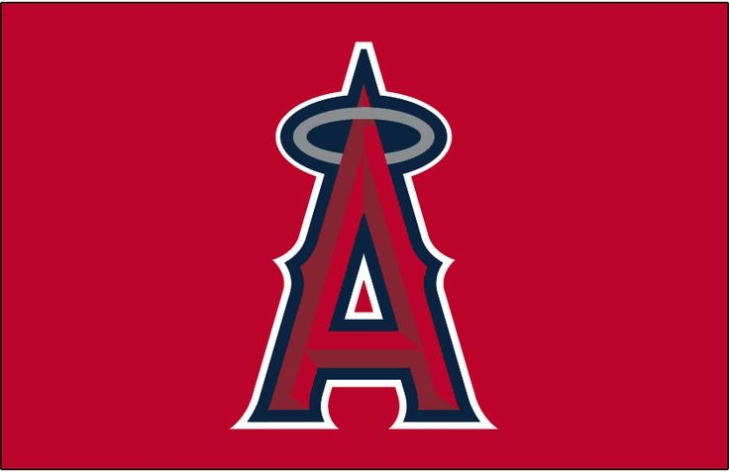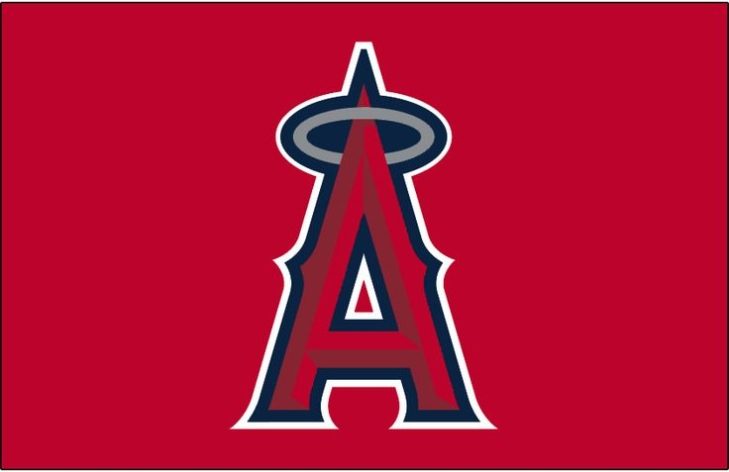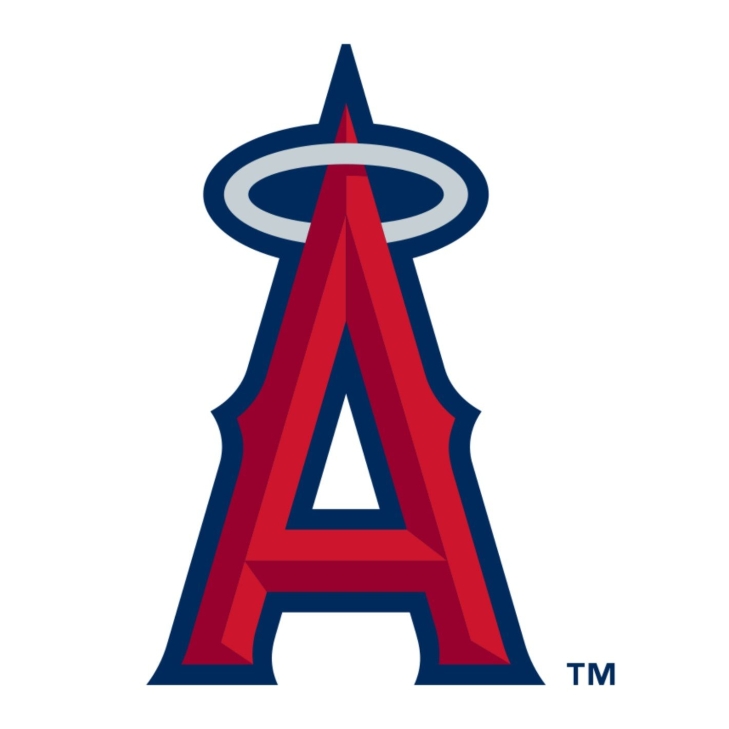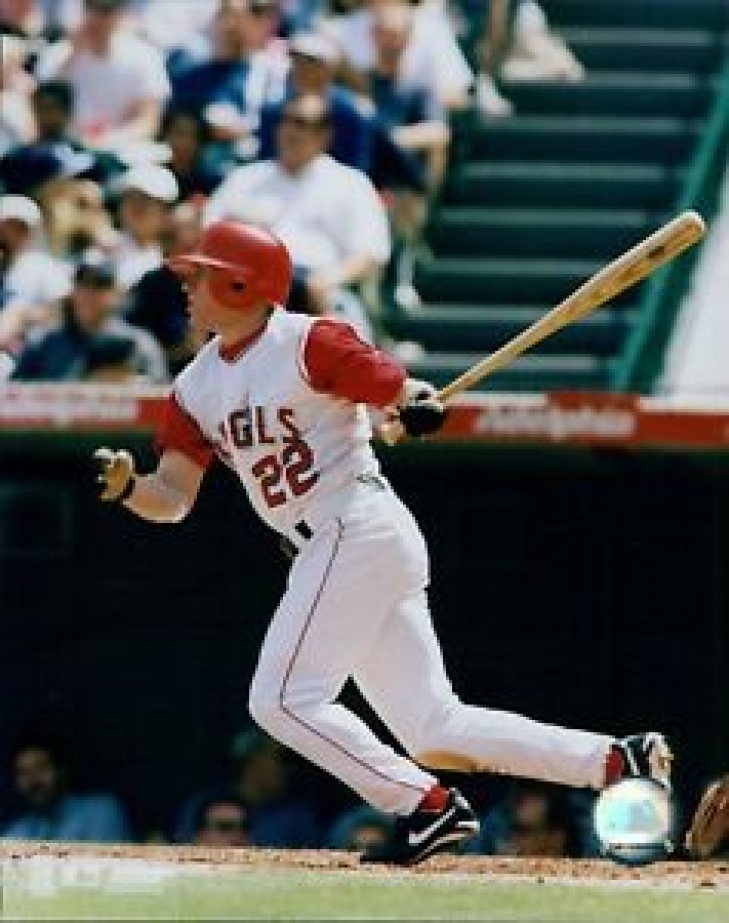Our All Time Top 50 Los Angeles Angels have been revised to reflect the 2024 Season
Yes, we know that this is taking a while!
As many of you know, we at Notinhalloffame.com are slowly generating the top 50 of each major North American sports team. That being said, we have existing Top 50 lists and consistently look to update them when necessary and based on necessity. As such, we are delighted to present our post-2024 revision of our top 50 Los Angeles Angels.
As for all of our top 50 players in baseball, we look at the following:
1. Advanced Statistics.
2. Traditional statistics and how they finished in the American League.
3. Playoff accomplishments.
4. Their overall impact on the team and other intangibles that are not reflected in a stat sheet.
Please note that our algorithm has changed, which yielded minor changes throughout the baseball lists.
Last year, the Angels had their first year of the post-Ohtani era finished last in the division as expected. There were no new entrants based on 2024, but there was one from the new algorithm.
As always, we present our top five, which saw two changes based on the new algorithm.
1. Mike Trout
2. Chuck Finlay
3. Nolan Ryan
4. Jim Fregosi
You can find the entire list here.
Under the new algorithm, Finlay surpasses Ryan for #2 and Jim Fregosi entered the top five..
With the new algorithm, Shortstop Gary DiSarcina comes in at #49.
We thank you for your continued support of our lists on Notinhalloffame.com.
Our All-Time Top 50 Los Angeles Angels have been revised to reflect the 2023 Season
Yes, we know that this is taking a while!
As many of you know, we here at Notinhalloffame.com are slowly generating the 50 of each major North American sports team. That being said, we have existing Top 50 lists out and we always consistently look to update them when we can and based on necessity. As such, we are very happy to present our post 2022/23 revision of our top 50 Los Angeles Angels.
As for all of our top 50 players in baseball we look at the following:
1. Advanced Statistics.
2. Traditional statistics and how they finished in Major League Baseball.
3. Playoff accomplishments.
4. Their overall impact on the team and other intangibles not reflected in a stat sheet.
Last year, the Angels went all in and imploded with another failure to make the playoffs. We only saw one change, and no new entries.
As always, we present our top five, which saw one major change.
1. Mike Trout
2. Nolan Ryan
3. Chuck Finley
5. Frank Tanana
You can find the entire list here.
Notably, Trout was already at the top of the list, and with Shohei Ohtani departing the club, his status at #1 is cemented for decades.
Ohtani made it to #4 from #12. As mentioned, he left the struggling Angels for a shot at the World Series with the Dodgers.
As always, we thank you for your support, and look for more revisions in the future.
Our All Time Top 50 Los Angeles Angels have been updated to reflect the 2022 Season
Yes, we know that this is taking a while!
As many of you know, we here at Notinhalloffame.com are slowly generating the 50 of each major North American sports team. That being said, we have existing Top 50 lists out and we always consistently look to update them when we can and based on necessity. As such, we are very happy to present our post 2022 revision of our top 50 Los Angeles Angels.
As for all of our top 50 players in baseball we look at the following:
1. Advanced Statistics.
2. Traditional statistics and how they finished in the American League.
3. Playoff accomplishments.
4. Their overall impact on the team and other intangibles not reflected in a stat sheet.
Last year, Los Angeles again failed to make the playoffs, despite having the two best players of this generation, one who is ranked number one on this list, and another who jumped 20 spots.
As always, we present our top five, which was not affected by the last season:
1. Mike Trout
2. Nolan Ryan
3. Chuck Finley
4. Frank Tanana
5. Jered Weaver
You can find the entire list here.
2021 MVP and dual-threat superstar, Shohei Ohtani, rocketed from #31 to #12.
We welcome your input and comments and as always, we thank you for your support.
Our All-Time Top 50 Los Angeles Angels are up
Yes, we know that this is taking a while!
As many of you know, we here at Notinhalloffame.com are slowly generating the 50 of each major North American sports team. We have a new one to unveil today, that of the Los Angeles Angels.
The Los Angeles Angels came into existence in 1961 as an expansion team, and while they were (and are) still secondary to the Dodgers, the constant name changes didn't help. They went from the Los Angeles Angels (1961-65) to the California Angels (1965-96), Anaheim Angels (1997-2004), Los Angeles Angels of Anaheim (2005-15), and back to the Los Angeles Angels.
The team did not go to their first postseason until 1979, and in 2002, they won their first Pennant, which is, to date, the only one they have captured. They made the most of their lone World Series appearance, winning it all.
Our Top 50 lists in Baseball look at the following:
1. Advanced Statistics.
2. Traditional statistics and how they finished in the American League.
3. Playoff accomplishments.
4. Their overall impact on the team and other intangibles not reflected in a stat sheet.
Remember, this is ONLY based on what a player does on that particular team and not what he accomplished elsewhere and also note that we have placed an increased importance on the first two categories.
This list is updated up until the end of the 2021 Season.
The complete list can be found here, but as always, we announce our top five in this article. They are:
1. Mike Trout
2. Nolan Ryan
3. Chuck Finley
4. Frank Tanana
5. Jared Weaver
We will continue our adjustments on our existing lists and will continue developing our new lists.
Look for our more material coming soon!
As always, we thank you for your support.
48. David Eckstein
David Eckstein was a throwaway pick in the 1997 Draft, taken in the 19th Round by the Boston Red Sox. The Red Sox placed him on waivers in 2000, and the Angels took a chance on the Shortstop, and it would be one of the organization's best decisions ever made.
At age 26, Eckstein made the Angels out of Spring Training, and he had a solid rookie year, batting .285 with 166 Hits with a fourth place finish in Rookie of the Year voting. The Angels fans loved him, and how could you not like a 5’ 6” dynamo who did whatever he could to get on base. In both 2001 and 2002, Eckstein led the American League in Hit by Pitch and Sacrifice Hits. Eckstein’s best season with the Angels was 2002, where he was 11th in MVP voting, had 178 Hits, and batted .293. Anaheim won it all that year, with Eckstein, the team's heartbeat leading the way.
Eckstein played two more seasons with the Angels, both decent, though not necessarily spectacular. He was a good hitter, with limited power, but realistically expandable. As popular as he was, Eckstein was not going to be in the upper-tier of Shortstops, though the Angels would have liked to have kept him after his contract expired following the 2004 Season.
He opted for St. Louis, where he would later win a second World Series Ring (2006). With the Angels, Eckstein had 614 Hits and batted .278.
50. Gary Pettis
The first six years of Gary Pettis' MLB career were with the California Angels, where he showed exactly what he was; a speedy and defensively skilled Outfielder who had zero pop in his bat.
Pettis debuted for the Angels in 1982, and two years later, he was their starter at Centerfield. From 1984 to 1986, Pettis was perennially second in Stolen Bases, swiping 145 bases in that period. He used that speed expertly with his glove, and he won two Gold Gloves, was the American League leader in Total Zone Runs in 1986 (22), and rarely made any errors.
Pettis was traded to Detroit after the 1987 Season, and although his offensive numbers were not impressive, his defense was, and he earns a place on this list.
46. Scot Shields
Scot Shields played his entire Major League career with the Anaheim/Los Angeles Angels, a job that spanned 491 Games, an incredible number for a Pitcher drafted in the 38th Round.
Shields made his first appearance in 2001, and he would find a role with the Majors in middle relief. A member of the 2002 World Series Championship Team, Shields had five straight seasons where he made at least 60 Games (2004-08), with the three middle exceeding 70.
Over his career, Shields accumulated 21 Saves and had 114 Games Finished.
37. Clyde Wright
Clyde Wright made his Major League debut with the California Angels in 1966, and his first four seasons saw him bounce back and forth from starting to relieving. It was not until 1970 where Wright had a breakout year, specifically as a Starter.
Wright’s 1970 Season saw him put forth a phenomenal record of 22-13 with a 2.83 ERA. He was an All-Star that year with a sixth-place finish in Cy Young voting. Wright was unable to secure any more Cy Young votes, but the southpaw had two more years where he had a sub 3.00 ERA and at least 16 Wins. After a troubling 1973 Season, he was traded to Milwaukee.
With the Angles, Wright had 87 Wins against 85 Losses.
47. Chili Davis
Chili Davis signed with California after seven years in San Francisco, and his first foray into the American League showed similar power numbers to what he had shown before.
Beginning his Angels career in 1988, Davis had at least 20 Home Runs and 90 RBIs in his first two seasons, progressively moving from the Outfield to Designated Hitter as his skills with the glove eroded. He joined the Twins as a Free Agent in 1991, winning a World Series there, and he returned the Angels in 1993, this time primarily as a DH. Davis was an All-Star in 1994, and in all four of his Angels years in his second run, he belted at least 20 Home Runs and 80 RBIs in all of them. Overall, as an Angel, Davis smacked 156 Home Runs, 618 RBIs with a .279 Batting Average. Davis later won two more World Series Rings with the Yankees.
Despite Davis’ strong offense, his abysmal defense when he was an Angel, and lack there of when he was a Designated Hitter, prevents him from a much higher rank.
43. Bobby Knoop
Bobby Knoop was your prototypical weak-hitting but defensively skilled infielder from the 1960s.
Playing at Second Base, Knoop first made the Angels roster in 1964, and along with Shortstop, Jim Fregosi, would become one of the top double-play combinations in the American League. Knoop won three straight Gold Gloves (1966-68) and led the AL Second Basemen in Total Zone Runs four times.
Knoop was not a heavy hitter, but he was an All-Star in 1966 when he led the AL in Triples (11) and had a career-high 17 Home Runs. He left California early in 1969 when he was traded to the White Sox.
He returned in 1979 as a Coach, holding that role until 1996, and would have a second run in that capacity from 2013 to 2018. Knoop was inducted into the franchise Hall of Fame in 2013.
42. Kirk McCaskill
One of the few Canadian Pitchers who had a long career in Major League Baseball, Kirk McCaskill, played the first seven of his 12 years with California.
McCaskill was a starter for the duration of his Angels run, where he twice posted seasons where he won at least 15 Games. McCaskill made the top ten in ERA in three different years, peaking with a fifth-place finish in 1989 with 2.93.
He left the Angels for the White Sox in 1992 and would have a 78-74 record in California.
45. Fred Lynn
Fred Lynn was one of the most popular players in the 1970s and was in rarified air as a player who won the Rookie of the Year and MVP in the same season. After seven years in Massachusetts, Lynn was traded to the California Angels, who thought he might be a player to help them reach the top.
Lynn had a poor start in California, as though he was voted into the All-Star Game, his numbers in the strike-shortened 1981 Season (5 HR, 31 RBI .219/.322/.316) were not good. Lynn was voted to the following two All-Star Games, but he was a better player than in 1981. He had at least 21 Home Runs in both of those years, batting at least .271, but his best moment was the 1982 ALCS, where despite the Angels losing, he won the ALCS MVP with a .611/.650/.889 Slash Line.
Lynn had another decent power year, hitting 23 Home Runs with a .271 Batting Average, and that was it for Lynn in California as he signed with the Orioles afterward.
With the Angels, Lynn had 71 Home Runs while batting .271.
44. Kole Calhoun
A 2010 Draft Pick, Kole Calhoun first made the majors with the Los Angeles Angels in 2012, becoming a starter at baseball’s highest level in 2014 at Rightfield.
In his first full season, Calhoun batted .272 with 17 Home Runs, and he followed that with back-to-back 161 Hit Years, which again had at least double-digit power numbers. Winning a Gold Glove in 2015, Calhoun kept his power numbers respectable, though he never matched his .272 Batting Average in 2014. In 2019, which would be his last year as an Angel (he signed with Arizona after), he smashed 33 Home Runs.
With the Angels, Calhoun had 884 Hits with 140 Home Runs.
41. Don Baylor
Don Baylor might be more recognized as a Coach and Manager, but this was one hell of a baseball player who had a lot of pop in his bat.
Baylor began his career with Baltimore in 1970, and after being traded to Oakland in 1975, he signed his first Free Agent deal a year later with the California Angels. After tying his previous high 25 Home Runs in his first year in California, he broke it with 34 in 1978 and 36 in 1979. That campaign was Baylor's best, seeing him lead the American League in Runs Scored (120), RBIs (139), and winning the American League MVP. This would also be Baylor's lone All-Star year.
Baylor was injured for most of 1980 but was healthy the two years after, again going yard often and accumulating 141 Home Runs for the Halos before signing with the New York Yankees as a Free Agent after the 1982 Season.
Despite the MVP and strong power numbers, Baylor’s rank is negatively affected by his poor defense. Had he been even average in the field, he would likely be ten to fifteen spots higher. Baylor was nevertheless the Angels' first MVP, and in 1990, he was the third man inducted into the Angels Hall of Fame.
34. Ervin Santana
Signed as an Amateur Free Agent from the Dominican Republic in 2000, Ervin Santana had an inconsistent career with the Angels, always seeming to flirt with greatness or appear close to it.
Santana made the Angels’ regular rotation in 2005, throwing for a 12-8 record and an ERA of 4.65. His sophomore campaign was better, increasing his Wins to 16 with a reduced ERA of 4.28, but 2007 was a mess where his ERA flirted with six, and he was demoted at one point to AAA. The righthander came back in 2008, winning 16 Games with his first ERA season under 3.50 (3.49) with a career-high in Strikeouts (214). He made his only All-Star Game as an Angel that year, and Cy Young voters placed him sixth overall.
His up-and-down existence continued, as over the next four years, he had two seasons with an ERA over five and two years when it went below four. Santana did have a career highlight, throwing a no-hitter in 2011, and he also had a career-best in Wins (17) in 2010.
Santana was traded to Kansas City after the 2012 Season, leaving the Halos with a 96-80 Record and 1,167 Strikeouts.
35. Albert Pujols
Ranking Albert Pujols so low is so strange for us. Spending the second half of his career with the Angels, we know that Pujols will be a first ballot Hall of Fame inductee, but after a decent start, Pujols devolved into the most overpaid player in baseball and one of the worst everyday players.
Pujols was a legend in St. Louis, winning three MVPs and leading them to a pair of World Series Championships. He was so good that a legitimate question lingers as to who was the greatest Cardinal of all time, Pujols or Stan Musial. When he was a free agent, the Angels aggressively pursued he First Baseman, offering a monster contract, taking the chance the player who was in his early 30s would not decline. But decline he did.
Pujols kept up good power numbers, blasting 30 Home Runs in his first year (2012) and getting back up to 40 in 2015, which was his lone All-Star campaign in Los Angeles. He had four years where he still had over three digits in RBIs, but he never had a .300 year in Batting Average, and quickly he couldn't muster a .300 in OBP either. As his skills eroded, his defensive liabilities grew, as did his speed. After multiple years where he had a bWAR in the negative, Los Angeles released him during the 2021 season, when Pujols would not agree to reduced playing time.
As an Angel, he did have 1,180 Hits and 222 Home Runs, but nevertheless, a player who couldn't run, couldn't field, and had a sub-three OBP through the last half of his stint was a huge liability and had to reflect on this list.
40. Devon White
Before he won two back-to-back World Series with Toronto, Devon White established himself as an upper-tier defensive Outfielder with the Angels.
After being drafted in 1981, White first made the Majors in 1985, and that year and in the one that followed, he played a combined 50 Games for the parent club. White won the starting Centerfielder role in 1987 and had 168 Hits with 24 Home Runs and 32 Stolen Bases, arguably his best season with California.
He had more acclaim in the following years, winning two Gold Gloves (1988 & 1989) and earning an All-Star berth in '89. White was generating the power numbers of 1987, but his fielding was excellent, and he had enough power and speed to make him a dangerous hitter.
After being injured for a portion of the 1991 Season, White was traded to Toronto in a six-player deal, and arguably he was the only player of note. In addition to his two rings in Toronto, he won a third in Miami.
With the Angels, he swiped 123 Bases, collected 551 Hits, and had a Defensive bWAR of 6.9.
39. Jim Abbott
Jim Abbott was born without a right hand, but you forgot it quickly when you saw him pitch.
The Angels believed so immediately, as he was a First Round Pick (8th Overall) in 1988, and he made their starting rotation the following season, going 12-12 with a 3.92 ERA. He was decent the next year (10-14, 4.51 ERA), but his best year in baseball by far was 1991. Abbott posted a record of 18-11 and a 2.89 ERA, which was fourth in the American League, and he was third in Cy Young voting. While his record dropped to 7-15 in 1992, his ERA went down to 2.77.
Abbott left the Angels for the Yankees as a Free Agent after the 1992 Season but returned in 1995 when he was traded from his then team, the Chicago White Sox. After a mediocre 1995, Abbott had an abysmal 1996, losing a league-leading 18 Games with an ERA of 7.48 and WHIP of 1.754. He was released after that and did manage to play two more years, but his run with the Angels was an inspirational one and will never be forgotten.
32. Dick Schofield
Dick Schofield was a highly sought-after player in the 1981 Draft and was taken third overall by the California Angels. Schofield first played for the Angels in 1983, but it would be clear that his biggest asset would be his defense. Fortunately, he was very good at it.
Schofield never had a season where he had over 126 Hits (1988) and only had at least three digits three times (1986-88). He did post three seasons of Defensive bWAR over 2.0, and he was one of the most underappreciated defensive players in the mid-80s.
He was traded to the Mets in 1992 and won a World Series Ring with Toronto before returning to the Angels in a bench role in 1995 for two years. Schofield did have a 10.7 Defensive bWAR for the Angels, which is currently sixth all-time in Angels history.
36. Bob Boone
Bob Boone is far greater known for his time in Philadelphia, where he helped them win the 1980 World Series, though don't sleep on what he did with the Angels.
Boone was with California for seven seasons and only had 742 Hits with an OPS of .620. That is poor offense, but the Angels did not acquire him for his bat. At present, Boone’s Angels Defensive bWAR of 14.7 is the highest in franchise history and is higher than what he did in Philadelphia. An All-Star in 1983, Boone led all American League Catchers in Total Zone Runs five times, Putouts five times, and Caught Stealing Percentage twice. He never finished less than fifth in Caught Stealing Percentage with California, and he added four Gold Gloves in his trophy case.
Playing with the Angels until he was 40, he left for Kansas City as a Free Agent, playing two more years before retiring.





















